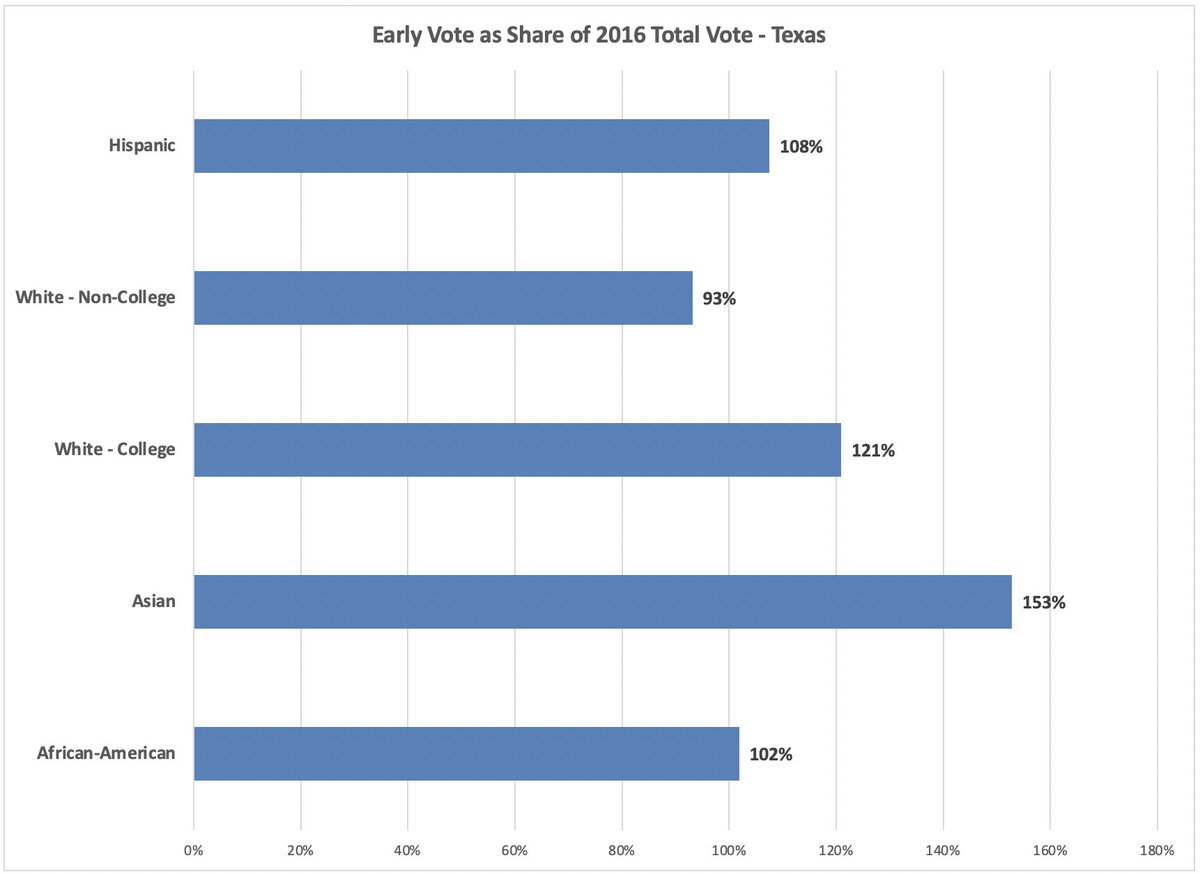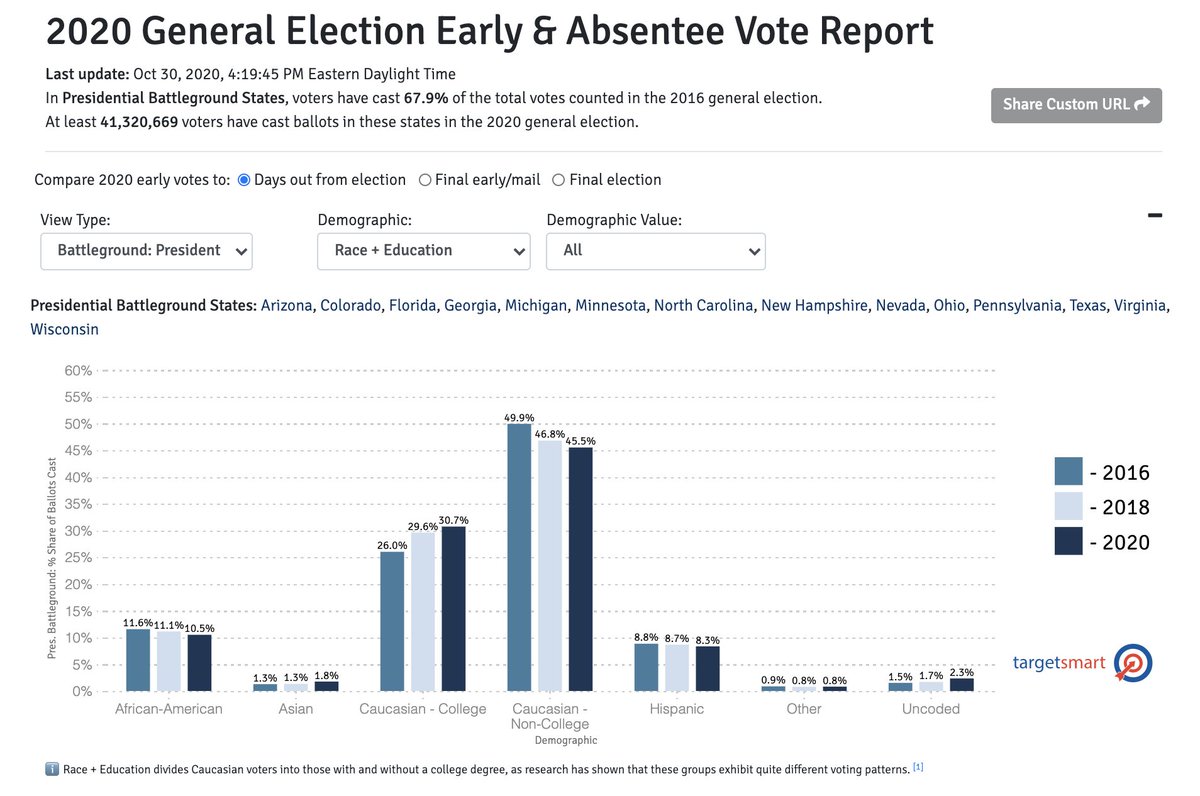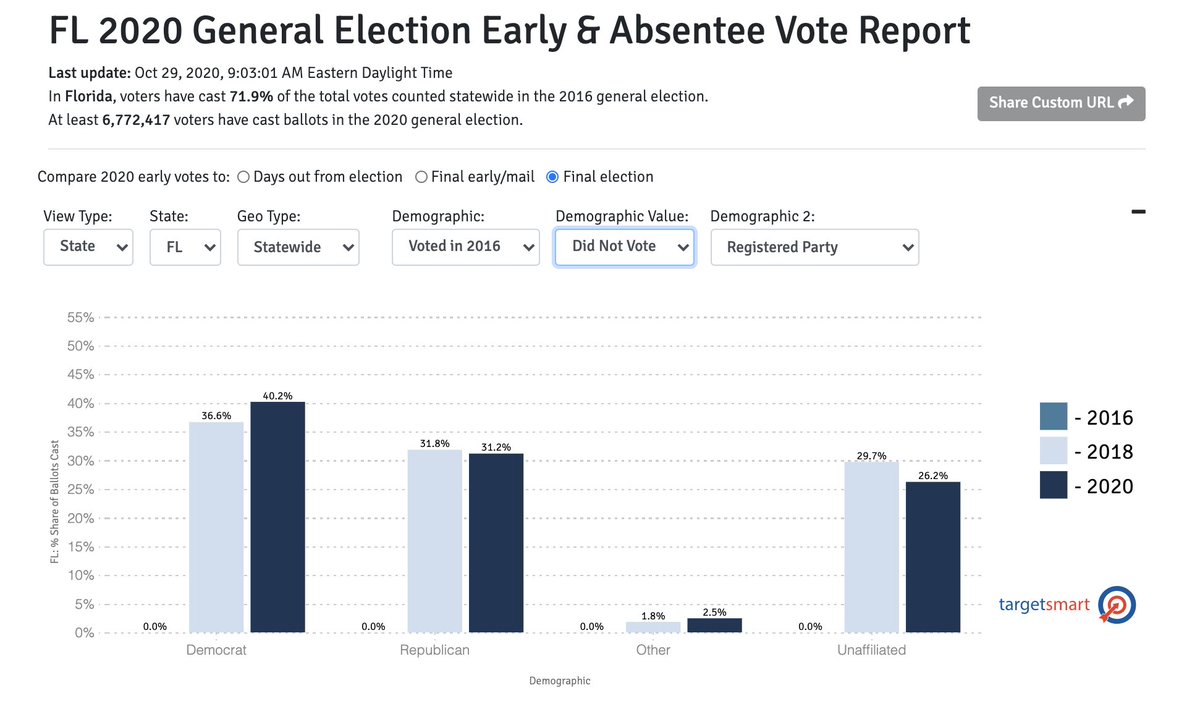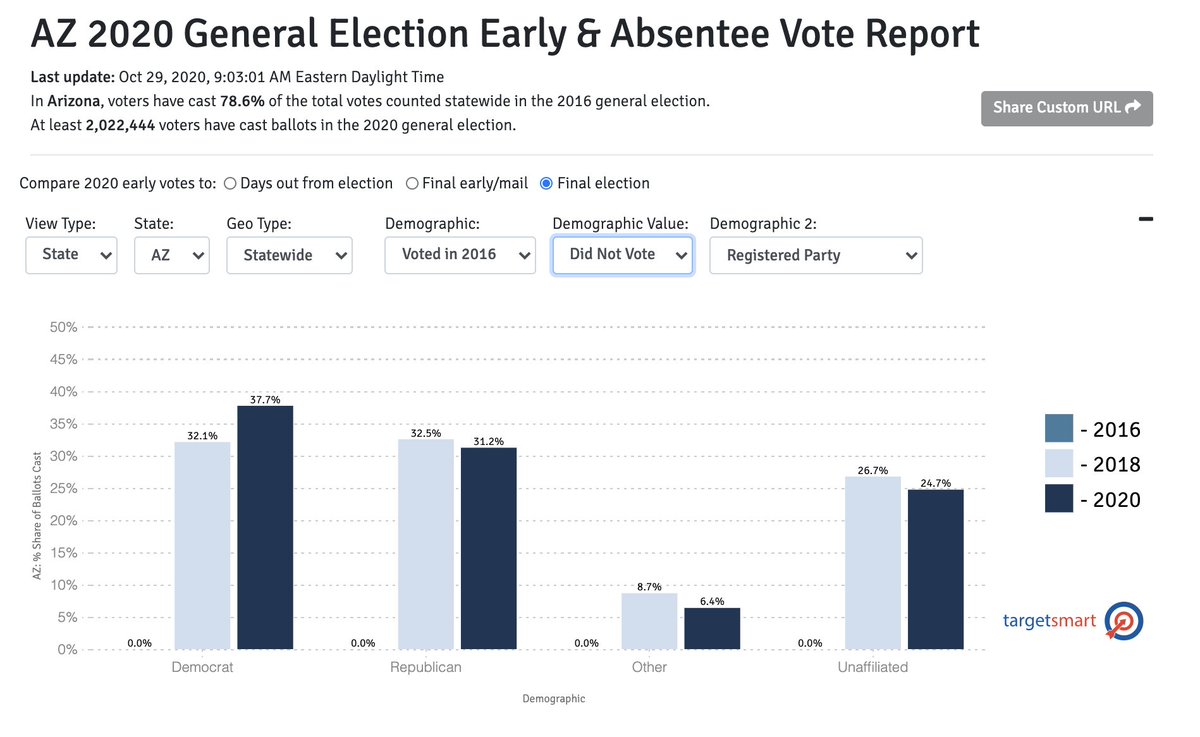
239,822 African American voters over the age of 65 have already voted in Georgia. That's 124% of the total 2016 turnout for African American seniors.
More Latino voters have already voted in Georgia (106,292) than voted in the entire 2016 election in the state (96,465).
Meanwhile, white non-college educated voters in Georgia lag behind their 2016 total vote by 439,513 votes.
• • •
Missing some Tweet in this thread? You can try to
force a refresh






